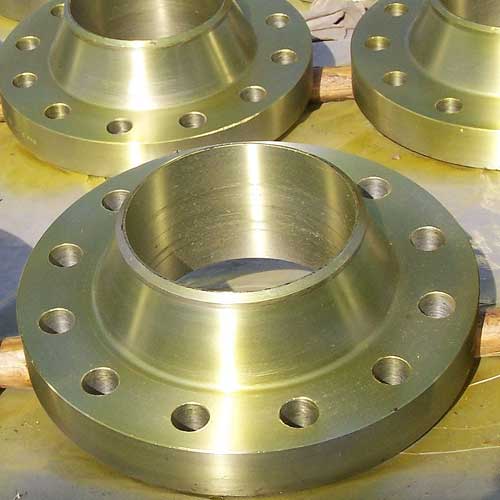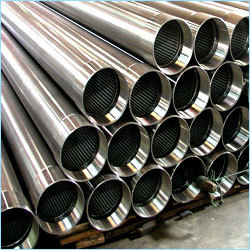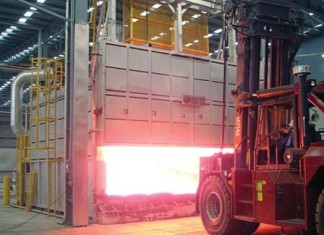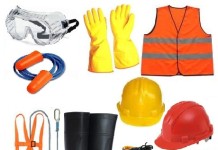Alloy steel
For improving the properties of ordinary steel, certain alloying elements are added in it in sufficient amounts. The most common alloying elements added to steel are chromium, nickel, manganese, silicon, vanadium, molybdenum, tungsten, phosphorus, copper, that the titanium, zirconium, cobalt, columbium, and aluminium. Each of these elements induces certain qualities in steels to which it is added. They may be used separately or in combination to produce desired characteristics in the steel. The main purpose of alloying element in steel is to improve machinability, elasticity, hardness, case hardening, cutting ability, toughness, wear resistance, tensile strength, corrosion resistance, and ability to retain shape at high temperature, ability to resist distortion at elevated temperature and to impart a fine grain size to steel. Like carbon, a number of alloying elements are soluble to produce alloys with improved strength, ductility, and toughness. Also carbon, besides forming an inter-metallic compound with iron, combines with many alloying elements and form alloy carbides. These alloy carbides as well as iron-alloy carbides are usually hard and lack in toughness. Some alloying elements are added to prevent or restrict grain growth. Aluminium is considered the most effective in this respect. Others are zirconium, vanadium, chromium, and titanium. The addition of alloying elements almost always affects the austenite-ferrite transformation mechanism. Some alloying elements lower and some raise the critical temperature. The compositional and structural changes produced by alloying elements change and improve the physical, mechanical and processing properties of steel. 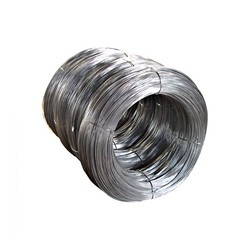
Effect of alloying elements in steel
The chief alloying elements used in steel are nickel, chromium, molybdenum, cobalt, vanadium, manganese, silicon and tungsten. Each of these elements possesses certain qualities upon the steel to which it is added. These elements may be used separately or in combination to produce the desired characteristic in steel. Following are the effects of alloying elements on steel.
1. Nickel.
Steels contain 2 to 5% nickel and from 0.1 to 0.5% carbon increase its strength and toughness. In this range, nickel contributes great tensile strength, yield strength, toughness and forming properties and hardness with high elastic limit, good ductility and good resistance to corrosion. An alloy containing 25% nickel possesses maximum toughness and offers the greatest resistance to rusting, corrosion and burning at high temperature. It has proved beneficial in the manufacture of boiler tubes, valves for use with superheated steam, valves for I.C. engines and sparking plugs for petrol engines. A nickel steel alloy containing 36% of nickel is known as invar. It has nearly zero coefficient of expansion. Therefore, it is in great demand for making measuring instruments for everyday use.
2. Chromium.
It improves corrosion resistance (about 12 to 18% addition). It increases tensile strength, hardness, wear resistance and heat resistance. It provides stainless property in steel. It decreases malleability of steel. It is used in steels as an alloying element to combine hardness with high strength and high elastic limit. It also imparts corrosion resisting properties to steel. The most common chrome steels contain from 0.5 to 2% chromium and 0.1 to 1.5% carbon. The chrome steel is used for balls, rollers and races for bearings. A Nickel-Chrome steel containing 3.25% nickel, 1.5% chromium and 0.25% carbon is much used for armour plates. Chrome nickel steel is extensively used for motor car crank shafts, axles and gears requiring great strength and hardness.
3. Tungsten.
It increases hardness, wear resistance, shocks resistance and magnetic reluctance. It increases ability to retain hardness and toughness at high temperature. It prohibits grain growth and increases wear resistance, shock resistance, toughness, and the depth of hardening of quenched steel. The principal uses of tungsten steels are for cutting tools, dies, valves, taps and permanent magnets.
4. Vanadium.
It improves tensile strength, elastic limit, ductility, fatigue resistance, shock resistance and response to heat treatment. It also acts as a degasser when added to molten metal. It aids in obtaining a fine grain structure in tool steel. The addition of a very small amount of vanadium (less than 0.2%) produces a marked increase in tensile strength and elastic limit in low and medium carbon steels without a loss of ductility. The chrome- vanadium steel containing about 0.5 to 1.5% chromium, 0.15 to 0.3% vanadium and 0.13 to 1.1% carbon have extremely good tensile strength, elastic limit, endurance limit and ductility. These steels are frequently used for parts such as springs, shafts, gears, pins and many drop forged parts.
5. Molybdenum.
A very small quantity (0.15 to 0.30%) of molybdenum is generally used with chromium and manganese (0.5 to 0.8%) to make molybdenum steel. It increases hardness, wear resistance, thermal resistance. When added with nickel, it improves corrosion resistance. It counteracts tendency towards temper brittleness. It makes steel tough at various hardness levels. It acts as a grain growth inhibitor when steels are heated to high temperatures. Molybdenum steels possesses hardness, wear resistance, thermal resistance and extra tensile strength. It is used for airplane fuselage and automobile parts. It can replace tungsten in high speed steels.
6. Cobalt.
When added to steel, it refines the graphite and pearlite and acts as a grain refiner. It improves hardness, toughness, tensile strength and thermal resistance.
7. Titanium.
It acts as a good deoxidizer and promotes grain growth. It prevents formation of austenite in high chromium steels. It is the strongest carbide former. It is used to fix carbon in stainless steels and thus prevents the precipitation of chromium carbide.
8. Aluminium.
It is used as a deoxidizer. If present in an amount of about 1 %, it helps promoting nitriding.
9. Copper.
It improves resistance to corrosion. It increases strength. More than 0.6 per cent copper for precipitation.
10. Silicon.
It improves magnetic permeability and decreases hysteresis losses. It decreases weldability and forgeability. It is also added as a deoxidizer during casting of ingots. It takes care of oxygen present in steel by forming SiO2. Silicon steels behave like nickel steels. These steels have a high elastic limit as compared to ordinary carbon steel. Silicon steels containing from 1 to 2% silicon and 0.1 to 0.4% carbon and other alloying elements are used for electrical machinery, valves in I.C. engines, springs and corrosion resisting materials.
11. Manganese.
It improves the strength of the steel in both the hot rolled and heat treated condition. The manganese alloy steels containing over 1.5% manganese with a carbon range of 0.40 to 0.55% are used extensively in gears, axles, shafts and other parts where high strength combined with fair ductility is required. The principal use of manganese steel is in machinery parts subjected to severe wear. These steels are all cast and ground to finish.
12. Carbon.
It increases tensile strength and hardness. It decreases ductility and weldability. It affects the melting point.
Reference Introduction to basic Manufacturing Processes and Workshop Technology by Rajender Singh.
For engineering project visit this page regularly for know more things related project ideas. Click here to see Ideas of Projects. Engineers Gallery. All the Best!

